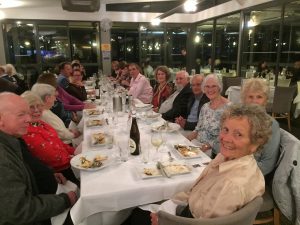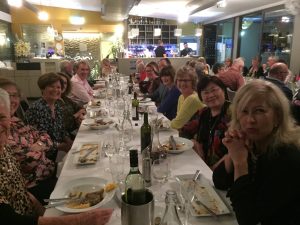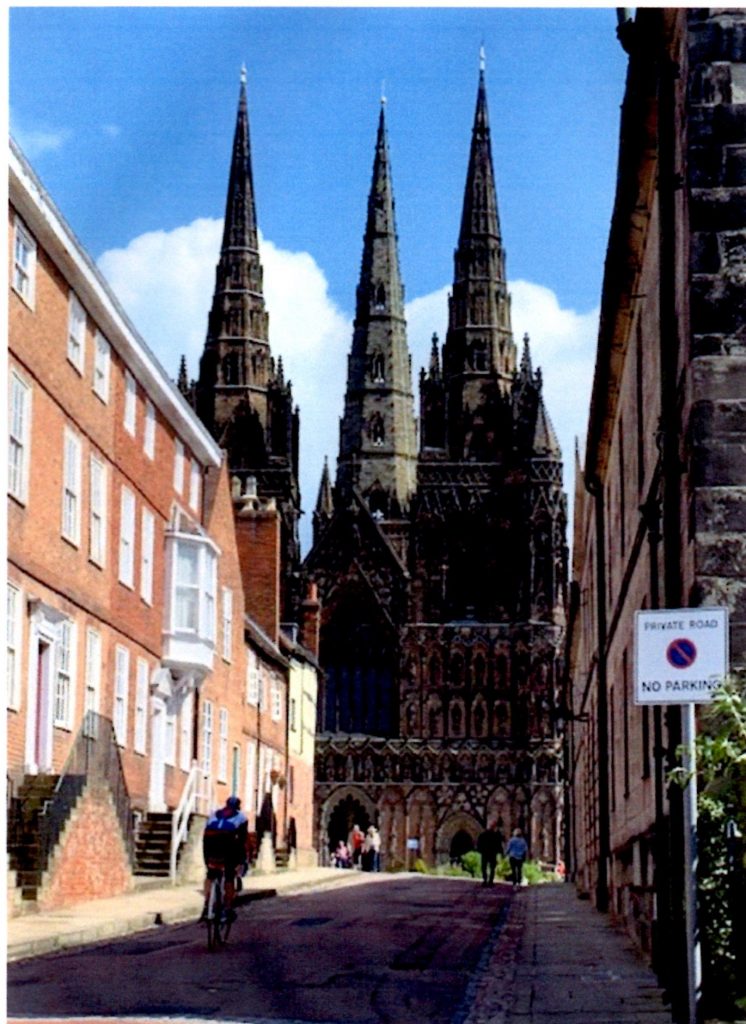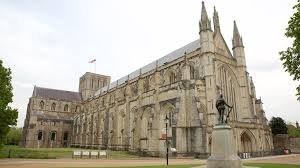Regular readers will know that I have been attending lunchtime lectures at the City Recital Hall this year on various topics associated with music.
Firstly, there was Music and Philosophy. I am sure that the concepts would have proved very interesting had the speaker and I shared the same vocabulary.
Then there was Music and the Periodic Table of Elements, which showed that scientists are always looking for patterns in nature, whilst musicians, painters and the like thrive by creating their own visual and aural patterns.
The third was Music and Mathematics. Now that should prove interesting, I thought, as my degree is in maths. Mind you, I only just got my degree as I seemed to spend most time at uni in non-academic activities such as music of various sorts and helping to run the Students’ Union. Oh – and, of course, meeting Anne……..
Going to the lecture was going to be a bit tricky as it fell on the second day of a romantic interval in everyday life organised by our children in honour of a recent wedding anniversary – top seats to see Madama Butterfly, preceded by dinner overlooking the Harbour and followed by an overnight stay in the penthouse of one of those luxurious hotels overlooking Circular Quay. It was all absolutely magic.
Anyway, Anne found a lunchtime organ recital at St James’ King Street at the same time as my lecture – much more her cup of tea. And I said as we parted, each with our own pack of sandwiches, that if they mentioned Fourier Transformations, the point at which my mathematical comprehension ran out, I would leave.
The professor of mathematics who spoke is also an amateur chorister, so there was an immediate bond. He started by talking about intervals – such as taking a string tuned to C, halving the length and getting C an octave higher. And, as is well known, different ratios give different notes: one quarter off the string length gives F and a third gives G.
It was only shortly afterwards that the dreaded Fourier Transformations raised their head. If I had not still been contentedly eating my sandwiches, I would have left. They were the last thing I expected in a talk about music. But apparently they are fundamental to digital communications, such that, for example, file formats for recorded music such as MP3 would not exist without them.
Then, like my degree maths, my comprehension suffered a catastrophic failure. There followed some very erudite comments and questions, but for me the sandwiches proved more interesting.
The other memory I have of the lecture is the speaker’s missing out all the other musical intervals except one. C to F# is the dreaded “tri-tone”, which sounds rather dissonant. The fraction of the string to be stopped is mathematically interesting, as it involves dividing something, I cannot remember what, by the square root of 2. Maybe that is one reason why, in Medieval times, the tri-tone was reputedly barred by the authorities from Church music for being the work of the Devil.
Of course, Mozart uses the once diabolical interval to good effect throughout the Great Mass in C minor, as we discover every Thursday evening. Not that knowing its mathematical basis makes it any easier to sing!
 Wednesday evening this week saw about fifty members of the Choir at Limani’s on Narrabeen Lagoon for a most enjoyable dinner. The format was changed from previous years to reflect the different location. There was no quiz, and the formalities were limited to a short welcome from our President, Naomi.
Wednesday evening this week saw about fifty members of the Choir at Limani’s on Narrabeen Lagoon for a most enjoyable dinner. The format was changed from previous years to reflect the different location. There was no quiz, and the formalities were limited to a short welcome from our President, Naomi. The food was up to Limani’s usual high standards, and the conversation flowed freely all evening. It was lovely to be able to have those extended conversations which on a Thursday evening at rehearsal are cut short by the ringing of the bell summoning us back to our seats. Once the meal was over, people seemed reluctant to set off home.
The food was up to Limani’s usual high standards, and the conversation flowed freely all evening. It was lovely to be able to have those extended conversations which on a Thursday evening at rehearsal are cut short by the ringing of the bell summoning us back to our seats. Once the meal was over, people seemed reluctant to set off home.
 One of the reasons is that a number of MWC members also belong to the Mater Chorale, which for the last two weeks has been standing in for two Cathedral Choirs in the UK, The Cathedral Choir Schools, which provide the choir throughout term times, are on summer holidays. To maintain the tradition of choral services in the cathedral every day, other choirs are invited to take their place. the Mater Chorale were in Lichfield (see left) last week and in Winchester (see below) this week.
One of the reasons is that a number of MWC members also belong to the Mater Chorale, which for the last two weeks has been standing in for two Cathedral Choirs in the UK, The Cathedral Choir Schools, which provide the choir throughout term times, are on summer holidays. To maintain the tradition of choral services in the cathedral every day, other choirs are invited to take their place. the Mater Chorale were in Lichfield (see left) last week and in Winchester (see below) this week. Each service includes two to four congregational hymns, sung to organ accompaniment. Then most services will need from the Choir an Introit, an Anthem, a Psalm (sung in traditional “pointed” style) and various chants such a the Gloria, Magnificat and Nunc Dimittis. And you cannot sing the same one at Evensong every day, nor in the three services which take place on Sunday. So there is a large repertoire to learn and i guess there will be extensive rehearsals every day prior to the services.
Each service includes two to four congregational hymns, sung to organ accompaniment. Then most services will need from the Choir an Introit, an Anthem, a Psalm (sung in traditional “pointed” style) and various chants such a the Gloria, Magnificat and Nunc Dimittis. And you cannot sing the same one at Evensong every day, nor in the three services which take place on Sunday. So there is a large repertoire to learn and i guess there will be extensive rehearsals every day prior to the services.